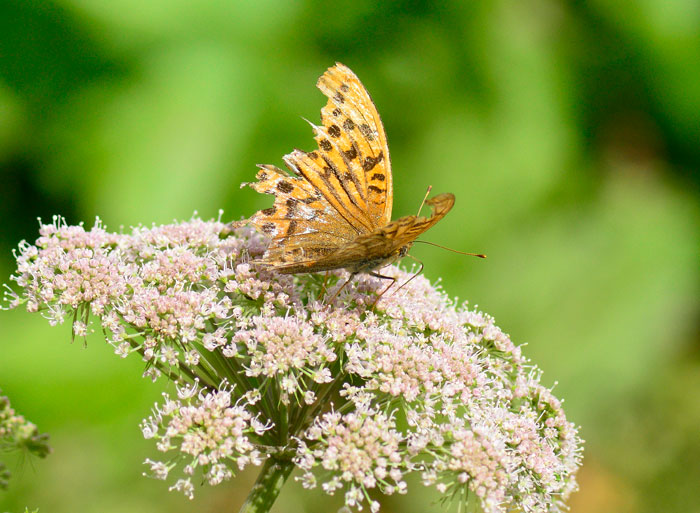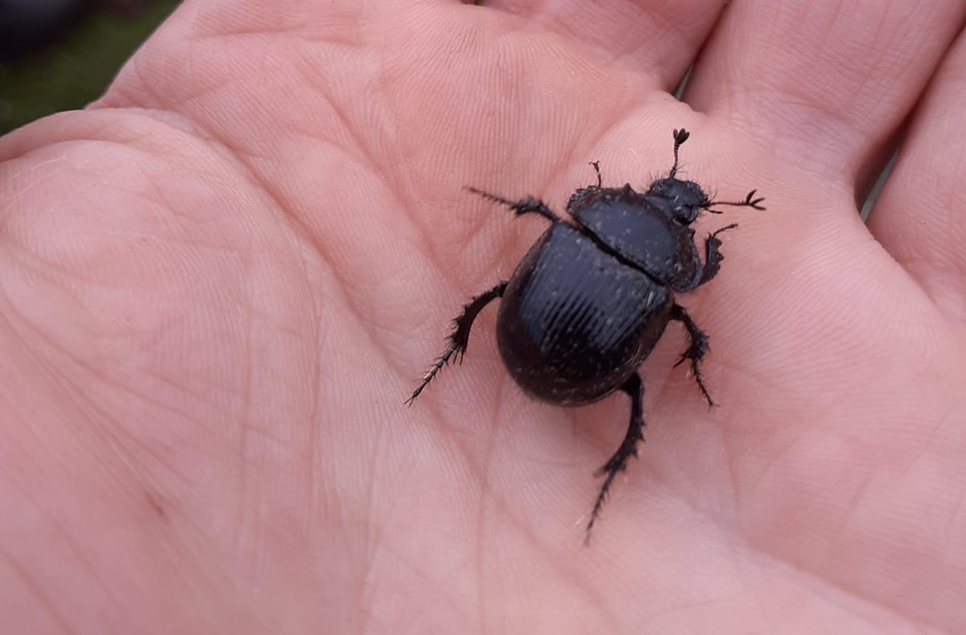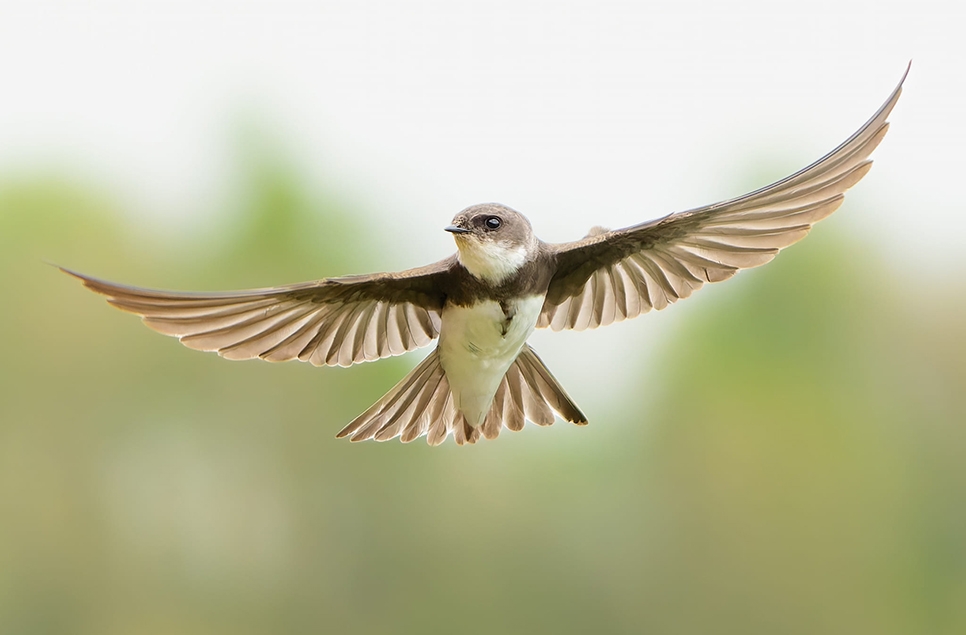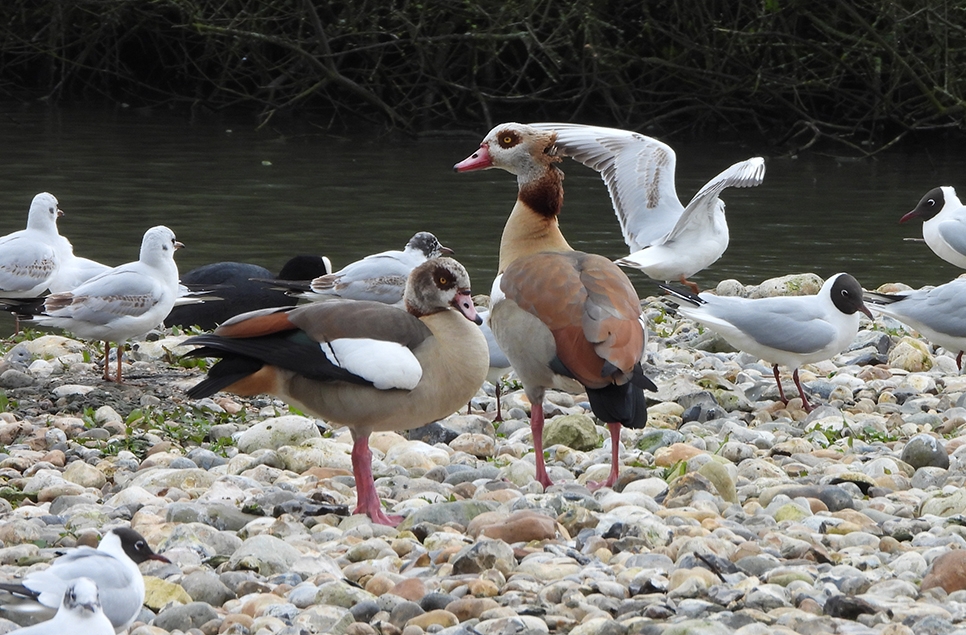First brown hair streak butterfly recorded
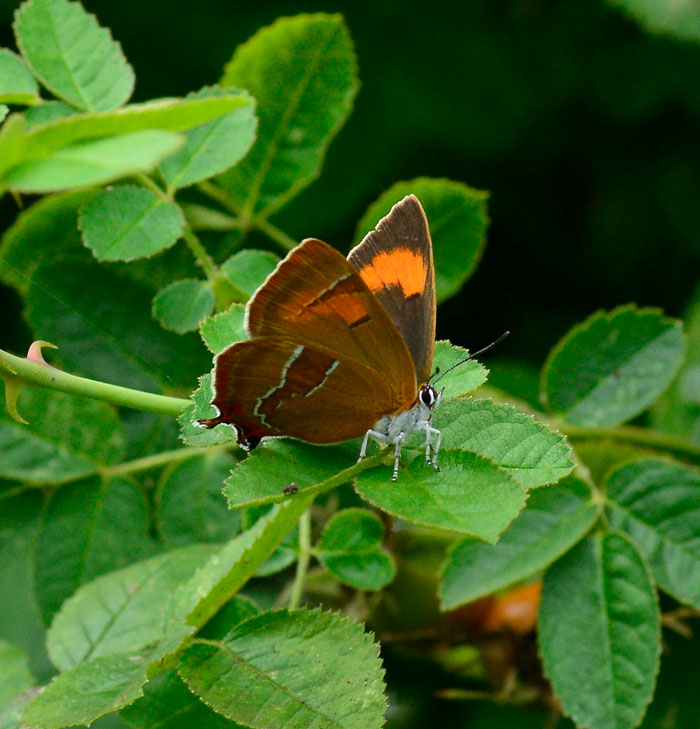
Last week I did another moth survey – we had 513 moths in the traps of 95 different species. 100 of the moths were mother of pearl species.
As I gaze over the channels of Wetlands Discovery I can see many dark patches in the water. This is holly leaf naiad plants we first recorded here in June 2015. The discovery of this rare British aquatic water plant in at Arundel Wetland Centre caused a stir amongst botanists around the UK. It only occurs on several broads in Norfolk so its occurrence here is something of a mystery.
Along the hedgerow I spot small green caterpillars – they are sawfly larvae on the dog rose leaves. Many of the hedgerow shrubs are already sporting autumn berries. The sloes on the blackthorn are ripe, elderberries are dark and guilder rose berries are glace red. With berries coming early will it be a hungry winter for birds?
Further along the path to the Lapwing hide I spot a common darter dragonfly. Many of these about but most prolific now seems to be migrant hawkers. A meadow brown butterfly flits about too - the gatekeepers seem to have finished. The butterfly garden is full of bees, a common carder on willowherb.
The owl chicks in the nearby nest box will be about 60 days old now. Warden Linda spotted a marsh harrier over the wet grassland this morning. From the Lapwing hide I get a good view of our sheep munching on water mint – that will give them nice breath!
Walking back up the path my eyes are drawn to a flutter in the hedgerow. A brown hairstreak butterfly has landed. I quickly get my camera make the first record of a brown hairstreak at Arundel Wetland Centre. It’s a newly emerged female – she will egg lay on blackthorn where its second year growth meets new growth. I will winter check for eggs here, looking out for tiny white dots.
I swing into the Ramsar hide on my way back up the path. Andy was in doing the WeBBS count (Wetland Breeding Birds survey) this morning and spotted a green sandpiper here. I look across the water for sand martins. Funnily, the martins have been coming in around midday for the afternoon as they move through, instead of the mornings or late afternoons as in previous years.
Moving towards the Scrape hide, I search the hedges as yesterday I spotted a hummingbird hawkmoth on buddleia near the Wildlife garden.
At the Scrape hide I spot a gadwall, a few teal and some mallards. Low numbers of ducks about as the winter visitors haven’t started trickling through yet and those ducks that are on site are hard to see in their moulted, mostly brownish plumage. I can hear bullfinches giving contact calls as they move around in family groups.
Near Wetland Secrets plant house I photograph a robber fly on the wooden handrail where it is camoflauged nicely. It quickly dives after a passing hoverfly – it preys on smaller flies. And is preyed upon by birds.
In the reedbeds we have been opening up the channels becoming obscured by reeds bolting in the hot weather. The migrant hawker dragonflies start patrolling the second we open up a channel. Cutting the reed angled back from our board walks allows the sun to hit the edge and water mint, water forget me nots, purple loosestrife and fleabane are flowering here. Fleabane seems to be having a great year onsite and is flowering in abundance everywhere.
On the boardwalk a female southern hawker dragonfly approaches, then hovers around some visitors, inspecting them closely much to the children’s delight. I see another common darter around the corner at the dragonfly pond. In the Meadow Maze I managed to photograph a gold spot moth near the bug hotel that is still swarming with honeybees and wasps attracted by the sweet scent. I also snap a silver washed fritillary butterfly, looking a bit knackered but still hanging on.
